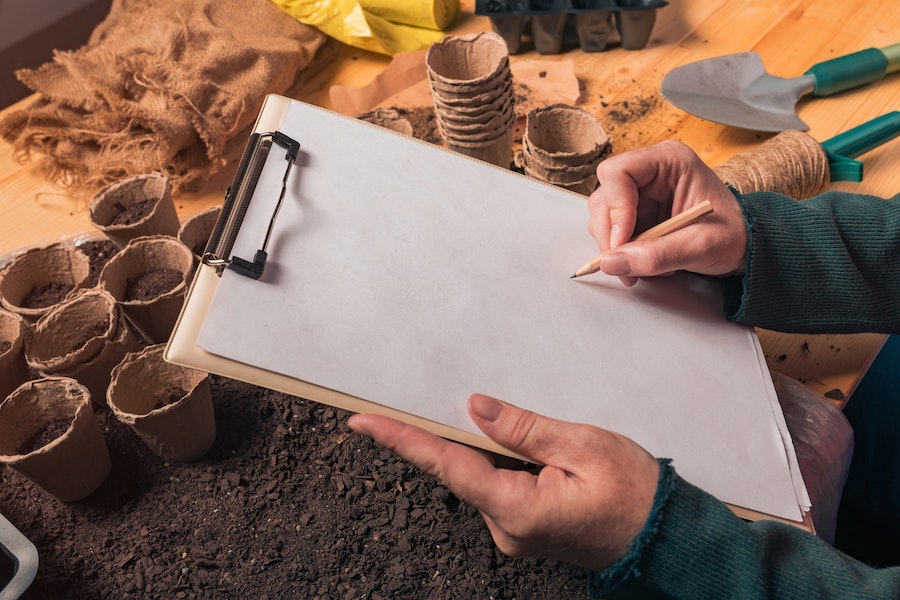Want to redesign your garden for 2020? Here’s how to give it a go yourself
The New Year is a great time for turning over a new leaf and planning a new look for your garden.
You can sit inside in the warm, sketch possible shapes and sizes of lawns, beds and borders, and maybe even contemplate a new patio.
Here’s some inspiration for getting started…
Tackling steep gardens

Dealing with a steep garden can pose problems
My own garden needs some careful thought as it’s on a steep hill – but I haven’t got round to terracing it into sections, as that would require major digging work and all the expense that goes with it.
The trouble with steep gardens is that if you want level planting areas, you can create terraces but you are likely to need a specialist to build the necessary retaining walls. However, if you decide to go ahead, it can mean endless possibilities, as such walls can include steps, water features and split-level flowerbeds.
Dealing with difficult shapes

Use trellis and climbing plants to separate different areas of the garden
You, too, may have a difficult garden which doesn’t have a uniform, rectangular shape, but while you are planning, bear in mind these basic guidelines.
The key to an interesting garden is to be able to move through it, and everything should not be visible at a single glance. It’s great to provide surprises by creating trellises or other borders, which will divide a garden into individual areas.
Softening borders

Soften gardens with curved borders
If you have a square plot, this may seem almost impossible, but you can soften boundaries with climbing plants. It is also a good idea to base the whole garden on a circular pattern, whether it be with a circular lawn or paved area, with soft curved borders providing eye-catching colour and detail.
If you have a town garden with an unsightly view of, say, an industrial building, or you are overlooked by neighbours, you could think about planting a tree or a climbing plant on trellis in a strategic position, to enhance privacy and create a pleasing sight for the eye.
Tackling narrow and wide gardens
People with wide gardens which are not very long should never place a focal point on the opposite boundary, as this will only emphasise the garden’s shortness.

You can create eye-catching surprises like this water feature in odd-shaped gardens
Instead, place eye-catching points from corner to corner, arranging a viewing point in one corner and planting the borders, so the eye automatically goes to the other corner.
Long, narrow gardens can also cause headaches, but such a plot can be divided effectively by creating a meandering path in an S shape, using plantings so that each curve you take brings you to another surprise.
Make a plan
There are a number of garden apps which will help you do this, including iScape (iOS), a great way to visualise how your garden could look. The app lets you take a photo of your garden, render it into 3D, then drag and drop features onto it, including plants, trees, ponds and ground cover such as grass and gravel.
Whatever online help you’re offered, make a list of what you want in your garden – will you be growing vegetables, making your own compost, investing in a greenhouse, or would you rather it consisted mainly of pretty pots and borders of colour?
If you are short of space, you may have to compromise on your initial wish list, rather than trying to cram everything in and not being able to move.
Also consider how much time you are going to have to spend maintaining your garden. If you have a full-time job, it may not be wise to have masses of beds and borders and a huge lawn, which will need high-maintenance upkeep.
Sketch it out
Always design a new garden on paper first, as though you are looking down on the garden. Measure the shape and dimensions, scale it down to suit the size of your paper and draw in your house first, making sure it is at the correct angle in relation to the garden.
Pick up ideas for new garden design by visiting public gardens, or flick through magazines and books to find pictures which may well correspond to the shape and size of your garden.
The Press Association
Latest posts by The Press Association (see all)
- The Osmonds star and ‘beloved husband and father’ Wayne Osmond dies aged 73 - January 2, 2025
- What screenings are available on the NHS to detect cancer early? - January 2, 2025
- Help your grandchildren make the most of Big Schools’ Birdwatch - January 1, 2025
- Veteran radio star Johnnie Walker dies aged 79 - December 31, 2024
- 5 fantastic winter walks for wildlife spotting - December 31, 2024




















